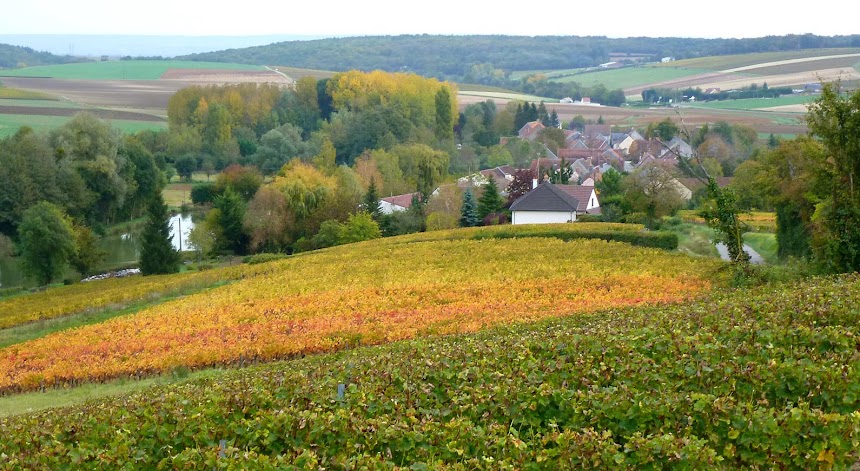“It might well surprise the vignerons [grape-growers who produce wine] of Sancerre and Pouilly, the uppermost of the mainstream Loire Vineyards, to learn what a profound influence their produce has had on forming modern tastes in white wine. It is an area of generally small and unsophisticated properties...” I'm quoting from Hugh Johnson's 1983 Modern Encyclopedia of Wine, a book that Walt gave me as a Christmas present in 1985.
Nevertheless, Johnson continues, the Sancerre-Pouilly wine area “...has an easily recognizable style of wine, pungent and cutting, with the smell and acidity of Sauvignon Blanc grown in a cool climate.” While far more Sauvignon Blanc is grown in the more southerly, warmer Bordeaux vineyards, down there “its wine never smelt and tasted so powerfully characteristic” as does the wine from the same grape grown on the upper Loire River. In Bordeaux, the tradition is to blend Savuvignon Blanc with the smoother and more neutral wine made from Sémillon gapes.
In fact, the world really only discovered how good Sauvignon Blanc was through the efforts of the vignerons of Sancerre and Pouilly, Johnson says. “Successful Sancerres and Pouilly Fumés have an attractive smell and taste of blackcurrents, leaves and all, and a natural high acidity which makes them distinctively bracing.” Because of their high acidity, Sancerre wines can benefit from two or three years aging in the bottle.
Sancerre wines only became really popular in Paris in the 1960s and 1970s, with the opening of the café-restaurant called Le Sancerre in the eastern part of the city (the 12th). (There is another restaurant called Le Sancerre on the other side of the city, near the Eiffel Tower.) Like most of France's vineyards, Sancerre and Pouilly had been wiped out by the phylloxera epidemic, caused by an insect imported from North America, in the late 19th century. It took decades for the vines to recover.
Sancerre's white wines earned the AOC label in the 1930s. The area also makes reds and rosés (less than 20% of total production) from the Pinot Noir grape, which is more often associated with Burgundy wines. Those earned the AOC later, and are still not much known outside the Sancerre region. Sauvignon Blanc is now grown extensively around the world, from California to New Zealand, and from Italy to Chile. Good Sauvignon Blanc aims to have the taste of Sancerre, not the milder taste of Bordeaux whites.





I like Pouilly Fumé, a lot, but I am not a fan of Sauvignon Blanc, at least California versions. I probably haven't tasted the right ones.
ReplyDeletePouilly Fumé is Sauvignon Blanc. But it's not oaked the way California Sauvignon Blanc can be. It's crisp, dry, and acidulated. California has done French wine varietals a great disservice in America by calling any old white wine Chablis, oaking up Chardonnay and Sauvignon Blanc, etc. You have to go back to the French wine-making methods to figure out what the grapes really taste like. Sancerre is more acidulated than Pouilly Fumé, but both are bone dry and clean-tasting when done right.
DeleteBone dry and clean tasting is just what I like in a wine. The store shelves here are heavily stocked with California wines, of course, and I find CA Chardonnay can mean a lot of different tastes, and they often do seem to be as you say "any old white."
DeleteI love you vineyard landscape
ReplyDelete